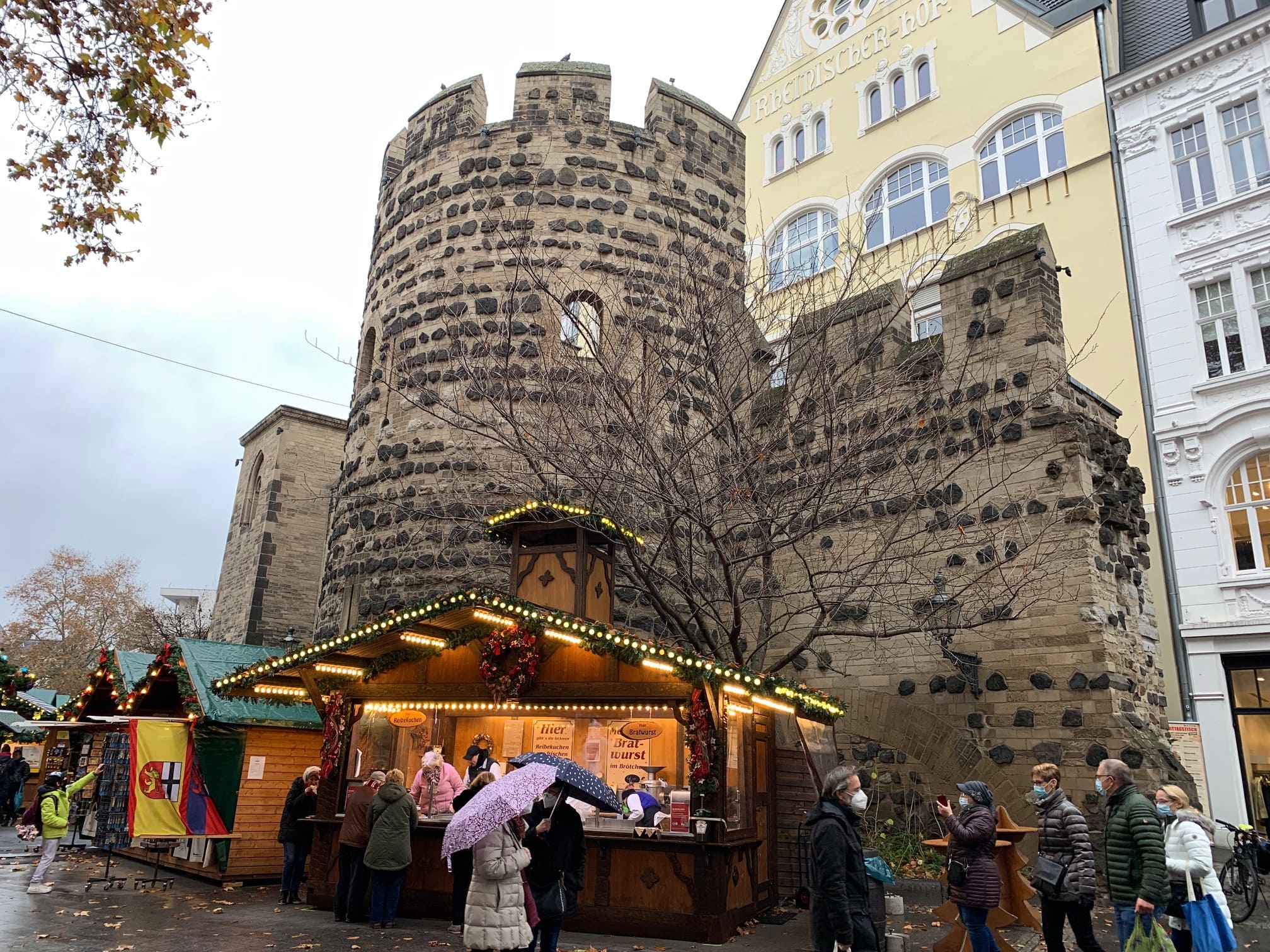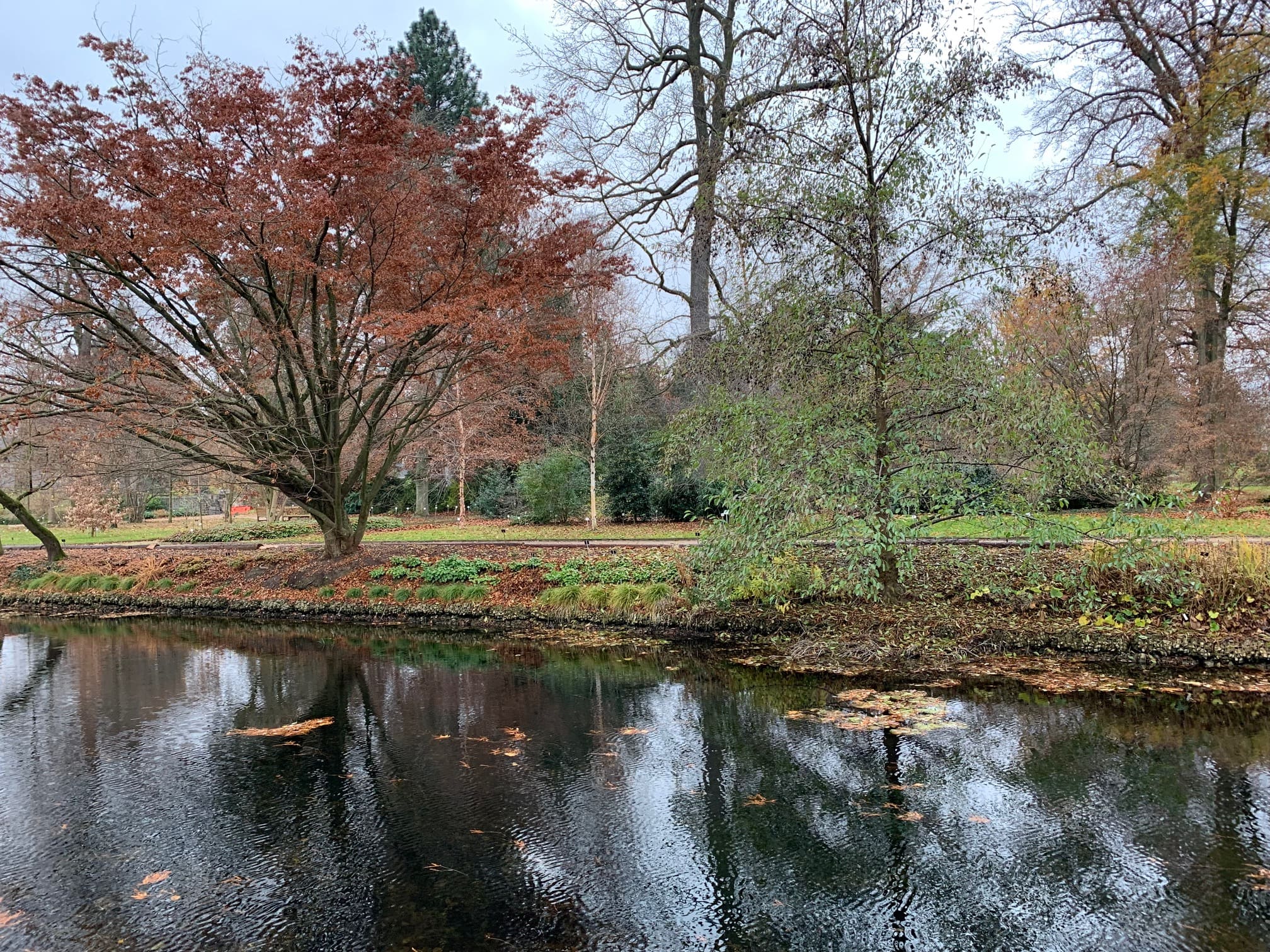I have visited this small German city on several occasions, the first time when the Christmas markets filled its squares, I had never been to any German Christmas market before and I was dazzled like a child on Twelfth Night.

On the Münsterplatz (Cathedral Square) stands the imposing statue of Beethoven, in front of the beautiful yellow post office.

Relentless watching the centuries go by also stands the Cathedral of San Martín.

From there, through its beautiful streets I reach the square where the beautiful Town Hall is, Altes Rathaus, built in 1730; next to it, in the same Marktplatz is a typical German brewery, with lots of wood inside, a tea room and a restaurant. Guess which one I enter and spend several hours reading.

Yes, in the Teehaus VarieTee, a very nice tea room, with soft music and divine cups and teapots.

The Thalia bookstore is nearby, located in the Metropole Theater, reminds me of the Ateneo Grand Splendid in Buenos Aires, a bookstore fused with a theater, can you imagine? How beautiful, so on each visit I go for a little walk just to indulge myself.

The Beethoven House Museum, where the famous composer was born, is a must-see in Bonn. The ticket is purchased in the building opposite, where the store is also located, it does not allow photographs inside, only in the garden. As you know I love to visit houses of historical figures. This one is very interesting and educational.

It’s cold and in front of it is the Lighthouse café, I like it, it’s very cute, I go in for a hot chocolate and a little quality time reading.
The Altstadt is the Old Town, the divine little streets of beautiful buildings, such as the Heerstraße, which fills with cherry blossoms in spring and becomes one of the most beautiful streets.

Nearby I discover the beautiful Café Camús. Writers and musicians that I have read and admire decorate its walls. The music is delicious, as is its chocolate and its avocado toast, it becomes my favorite cafe in Bonn.

Nearby is the Old Cemetery of Bonn, Alter Friedhof, with that charm that the old necropolises have, with its tombs full of moss watching time go by. They seem very romantic to me, they remind me of those classic works that I like to read. In it are the tombs of the composer Robert Schuman and his wife Clara, or Beethoven’s mother.

I pass by the Haribo candy store, originally from here. The first factory opened in 1922 and is where children have been going every October since 1936 to exchange chestnuts and acorns for sweets during the festivalt of San Martín. The name is the initials of its creator and the city, HAns RIegel BOnn.
It’s time to leave the center, the huge building of the University of Bonn sits in front of a park, beautiful in autumn. It was founded in 1819 by Frederick William III of Prussia and is one of the most prestigious in the country.

Seven Nobel laureates were trained here, some of his famous students were Karl Marx, F. Nietzsche, Albert of Saxe-Coburg (husband of Queen Victoria), Emperor Wilhelm II or Konrad Adenauer (a very important German politician and chancellor since he was one of the “founding fathers of the European Union” and who led Germany to be a prosperous nation after the ruin of World War II).

After exploring the university and happily finding the philology department, I walk along the promenade that leads to the Botanical Garden. I laugh alone when I see in a house a statue of a bull in the garden, a bull?

I arrive at the 18th century Poppelsdorf Palace, where the gardens are located, which belong to the University and can be visited for free.

From there I walk between charming residences that remind me of the brownstones of New York, these are white or pink.

I am still on the grounds of the University, next to the Rhine River is part of the fortress that protected the city, they call it Alter Zoll am Rhein.

And passing under the bridge I can see a small Jewish memorial, the Alter Bonner Synagoge.

When I visited Bonn for the first time I fell in love, small, pretty and the markets just put the icing on the cake. Perhaps what I like most is that here lives one of my best friends and her wonderful children, and that makes my moments happier. Soon I will tell you about the walks we have taken through those German villages near the former capital of the Federal Republic of Germany before unification.
If you wonder what book I was reading in the café Camús well, this is the one, “Open: Autobiography” by the tennis player Andre Agassi. His story with the tennis, his personal perspective, how he felt it, and the decisions he often did not make and those that did, led him to be who he was.
I don’t understand much about tennis, but that part was very easy to understand, interesting to know firsthand what the life was like for a contemporary who became number one in world tennis. Totally recommended if you like biographies.



